Collections Highlights: Passover

A blog post by Director of Collections and Exhibits Joanna Church. To read more posts by Joanna click HERE.
For this week’s Insights, the team asked me to highlight some Passover-related pieces from our collections. I know this year will be a Pesach unlike any in recent memory: a holiday that thrives on group celebration forced into the virtual domain, at best, and into solitude at worst. But I don’t want to bring us all down! I did a deep dive into our Passover-related photo and artifact collections – you can do the same in our online database – and here are a few things that caught my eye!
Mobilize for Passover
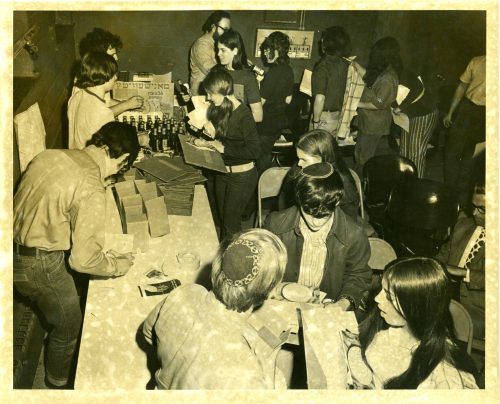
In our JCC photo collection there are a few images labeled, by the original photographer, “Youth Passover Mobe.” Say what, now? Thankfully one of the photos spells it out more fully: Passover Mobilization. In April 1971, Baltimore teens joined together to make Passover packages to send to various embassies in DC, in support of Soviet Jewry. According to the Baltimore Sun (April 4, 1971):
“‘Freedom Packages,’ a symbolic effort to solicit world support for Soviet Jewry, will be delivered during Passover Week to all embassies in Washington by a group of Baltimore Jewish teen-agers.
“Calling the event the ‘Passover Youth Mobilization for Soviet Jewry,’ the organizing committee under the auspices of the Baltimore Jewish Community Center will package wine, matzot, an Haggadah (the special prayer book read during the Passover Seder feast) and several letters of concern on Monday, April 12, and delivery them the following day, Tuesday, April 13.
“Members of the Mobilization will notify each embassy of the proposed visit and express the hope that the packages will be accepted.
“Included in each package will be a copy of a letter being sent to the United Nations Commission on Human Rights, seeking implementation of a section in its Universal Declaration of Human Rights which states: ‘Everyone has the right to leave any country and return to his country.’”
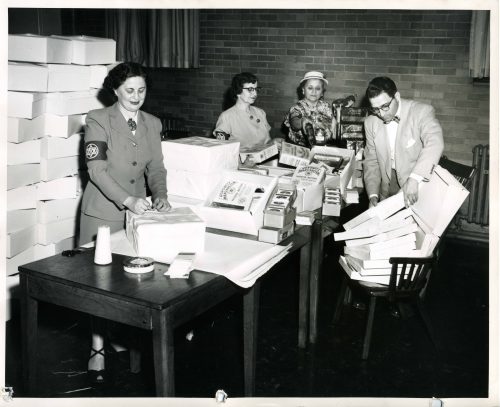
This reminded me of another set of images, this time from the Jewish Welfare Board collection, in which folks worked to share the celebration with those in need. In this photo, according to the Baltimore Jewish Times (April 25, 1952):
“Besides arranging four seders for over four hundred servicemen and hospitalized veterans in the Baltimore area, the Jewish Welfare Board Passover Committee prepared several hundred gift and food packages, containing fish, canned meats, macaroons, cheese, matzo, nuts and candy. Left to right: Mrs. Henry [Rose] Gresser, Mrs. Nathan [Gertrude] Blum, Mrs. Max [Rose] Meyers, chairman of the Passover committee, and Mr. Joseph Greenhut, area director.”
Did you or your family participate in either of these projects, or in something similar (past or present)? How do these initiatives compare with the efforts we’re making this year to share the holiday with those we can’t be with in person, or who might need some help preparing their Seder while sheltering at home?
A Set of Seder Plates
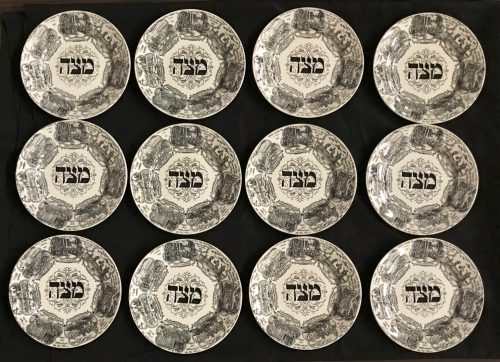
We have several individual seder plates in our collections, of varying ages and styles… and then we have this wonderful set of 12 matching plates, perfect for a big family celebration. Even better, we have photos of the plates in use! This set was owned by Adolf and Paula Hamburger of Baltimore, who held an annual Seder for their extended family. (Adolf and Paula married in 1946; he died in 1959.) The plates were donated to us by a descendant of one of Adolf’s sisters, Lillian Hamburger Sonneborn.
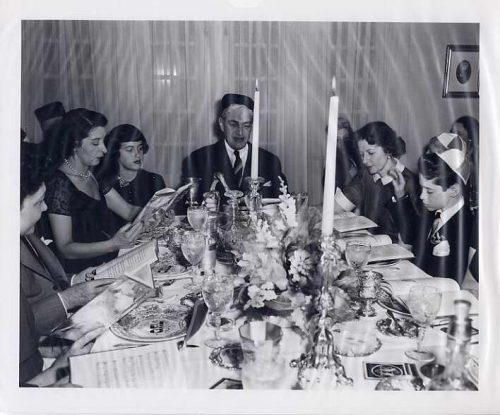
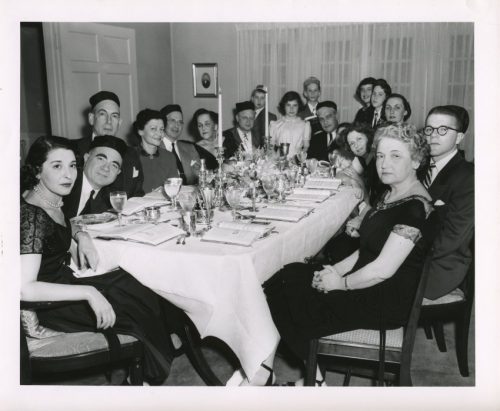
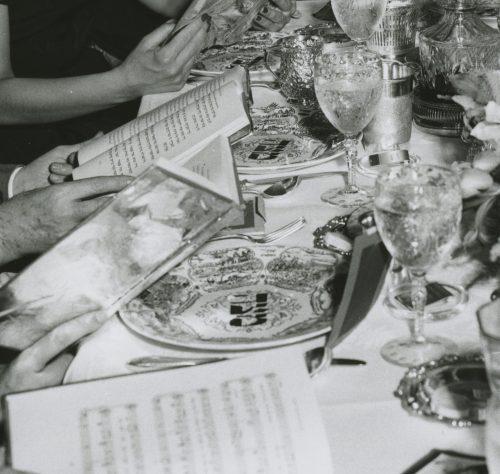
Each plate is marked on the back “Bardiger, London. Manufactured by Ridgway’s, England. Reg. No. 699856. Tepper London.” Solomon Bardiger, a Ukrainian Jew who came to England in 1890, owned a china shop at 180 Brick Lane, Bethnal Green, London. In the 1920s he commissioned transferware Passover dishes from the manufacturer Ridgway’s, with at least two styles available, and in various colors including black, red, and blue. Another example of Bardiger’s wares in our collection can be seen here.
I find this little collection rather poignant this year, as so many families – accustomed to large gatherings like the ones the Hamburgers hosted – are having to change their plans and move to a smaller in-person event. If Adolf and Paula were here today, perhaps they would have sent some of these plates off to their friends and family, so that they could all enjoy a little connection through their matching china.
Is your family using material culture (to throw a technical term in there!), whether an heirloom or something made specially for this unusual year, to create togetherness during your Seder?
An Heirloom Matzoh Cover
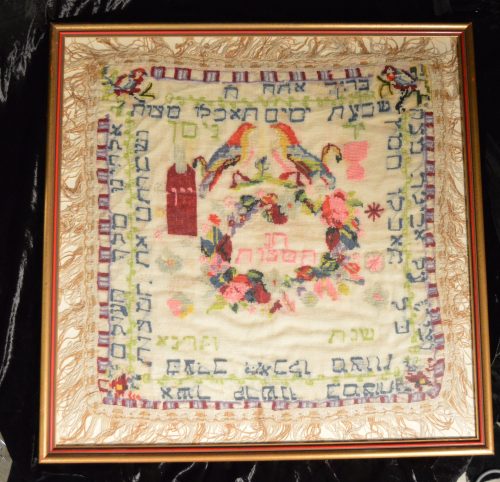
We have several matzoh covers in the collection, most of them commercially made – no judgement here, nothing wrong with a machine-embroidered piece purchased in a shop! – but my favorite is this one, a charming hand-made square from the turn of the last century. It was made by Bessie Levitt Jacobs, the donor’s beloved aunt, likely when Bessie was a young teenager and probably in Europe; at some point, after several years of use, the cover was framed for display. The Levitt family came to Baltimore from Lithuania in 1906; not much more is known about Bessie’s life at this point, but happily we have this piece, carefully preserved by the family, to remember her by.
This year, heirlooms may take on a greater significance for families unable to celebrate together in person. I can’t help but wonder whether, were Ms. Rosenberg still alive right now, she would choose to unframe her aunt’s work to use it once more, bringing those memories a little closer.
What heirlooms or special objects do you include in your Seder, and are you adding others this year?
